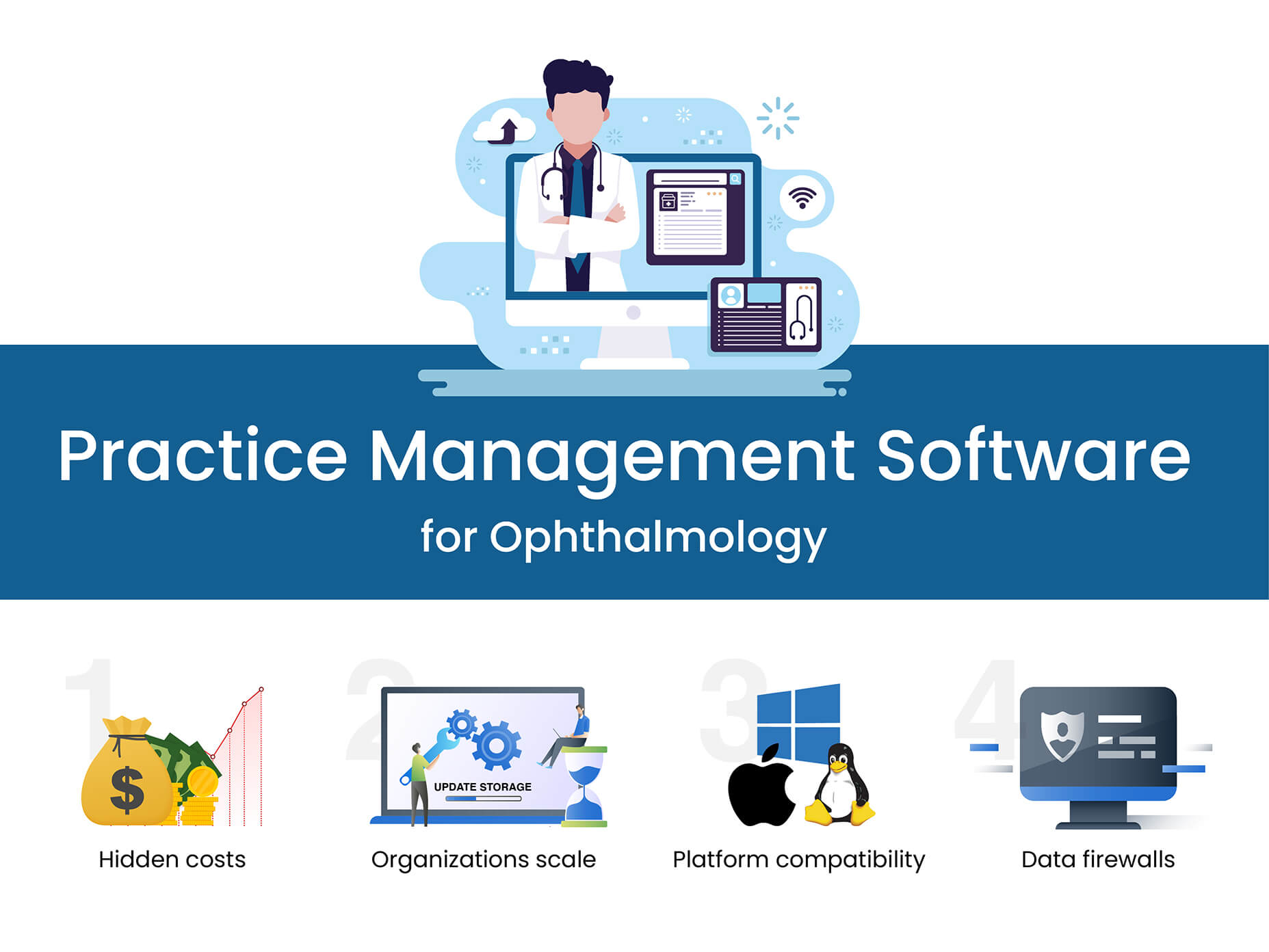Thinking about a Practice management software for Ophthalmology?

With the title Practice Management Software, you may have guessed that the purpose of this article is to sell you the product! That is, at least, what some people assumed. However, because eye care management is such a delicate and precise profession, we at EHNOTE believe that doctors should not end up with an ophthalmology EMR that complicates rather than simplifying their clinical management.
The generic and redundant client-server software's are accustomed in several eye care settings. Assembled by stereotypes of "Traditional architecture", fancy catchphrase like "complete ownership and control", and boasts of one-time investment, with all these justifications, falling through the cracks! Is the client-server system still a right choice for your Ophthalmology practice?
There's no denying that on-premise software has played a critical role in the growth of healthcare IT. Is it, however, still appropriate for today’s eye care ecosystem, given the increasing population, cost, and demand? Has client scope software brought the healthcare IT revolution to a halt?
Consider the following limitations before you dive in headfirst:
Hidden Costs: It is a known fact that On-premise software requires an upfront capital investment, leaving your financial resources limited for other operations. Other tasks are sometimes compromised by organizations, resulting in an imbalance in the clinical workflow. According to certain Client-scope Practice management software vendors, a client-server system is significantly less expensive than a cloud-based Ophthalmology EMR. However, the cost comparisons are biased and incomplete.
If one considers only the hardware cost of a Client-Server Practice Management System, it can be less expensive than Cloud-based software. However, if one includes all other necessary costs, such as software development, security and control, training, and technical support, the total cost of a client-server Ophthalmology EHR software exceeds that of a cloud-based PMS. Eye care settings should be aware of those other costs, which are often labelled "hidden" costs.
Limits you Eyecare Organizations scale: The client-server hospital management system is still in its infancy, and healthcare architecture models are constantly evolving. "Can we afford to scrap, re-build, or re-buy this system in two years?" should be asked of every client-server Ophthalmology EMR vendor.
If your Eyecare hospital scales up and needs more storage space or other capabilities, it’s more difficult to scale your Client-server Ophthalmology EHR quickly. Unlike cloud-based Hospital Management Software, which allows Eye care settings to upgrade their plans with a single click, on-premises software requires you to install new hardware and devote manpower to building the new systems. This can cause major disruptions in productivity and may put your Eye Care Organization's progress on delay.
System openness: System openness refers to the client-server system's ability to operate with a variety of software and hardware setups. Most system users are aware that IBM hardware and software cannot be readily installed on Apple computers. As a result, Apple's system is not compatible with IBMs, and vice versa. Future expansion is always essential, particularly in this era of rapid technological advancement. Assume your eye care setting requires advanced integration to expand in the future. What will happen if the designed system isn't compatible with several platforms? Integration into a client-server EHR would be a difficult task, Perhaps Impossible!
No data firewalls: Eye care providers have only dumb terminals in on-premise systems, which can't support local data storage, and data is saved in the central system. The traditional method of data security control is to create passwords for various levels of data authorization. Severe data security measures are often incompatible with user-friendliness. Every time a user of the on-premise system crosses a communicating bridge to reach another system on the network, he or she must enter a new password. End-users of a client-server EHR system with multiple servers would have to remember a bunch of different passwords, and the speed of data access and processing would slow to an unbearable level, The potential user-friendliness would be eliminated.
In Cloud-based Ophthalmology EMR, on the other hand, Clinical data is maintained in walled gardens, where the administration may establish the degrees of authorization for data access.
Conclusion:
A system that limits your practice and confines you to your clinical desk, is it the right Clinical Practice Management Software?
